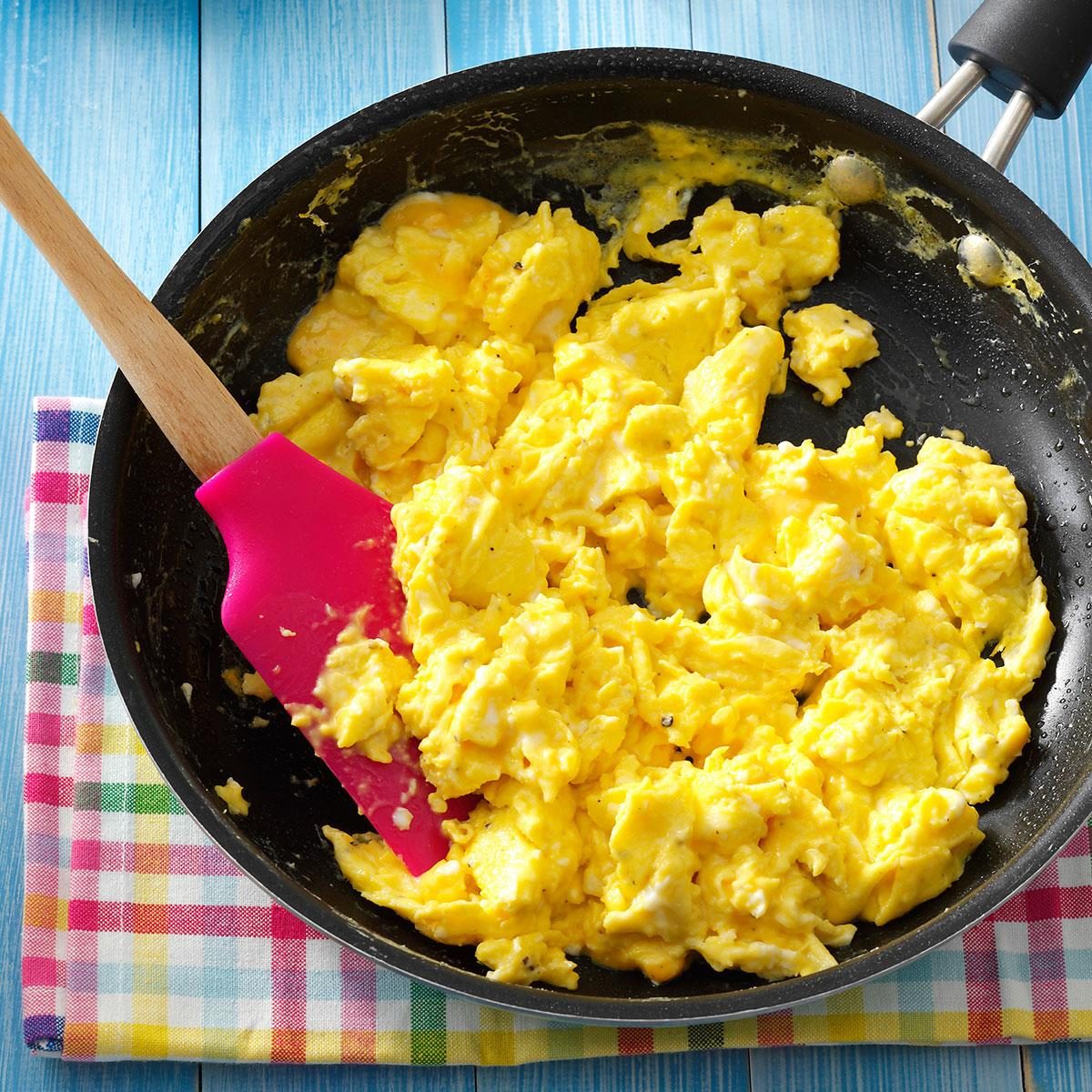
The do’s and don’ts of non-stick pans
A beloved cooking tool, non-stick pans have a place in many a home cook’s heart for their even cooking and quick clean-up. However, non-stick pans are not a one-size-fits-all solution and should be used for quick-cook proteins for the best—and tastiest—results.
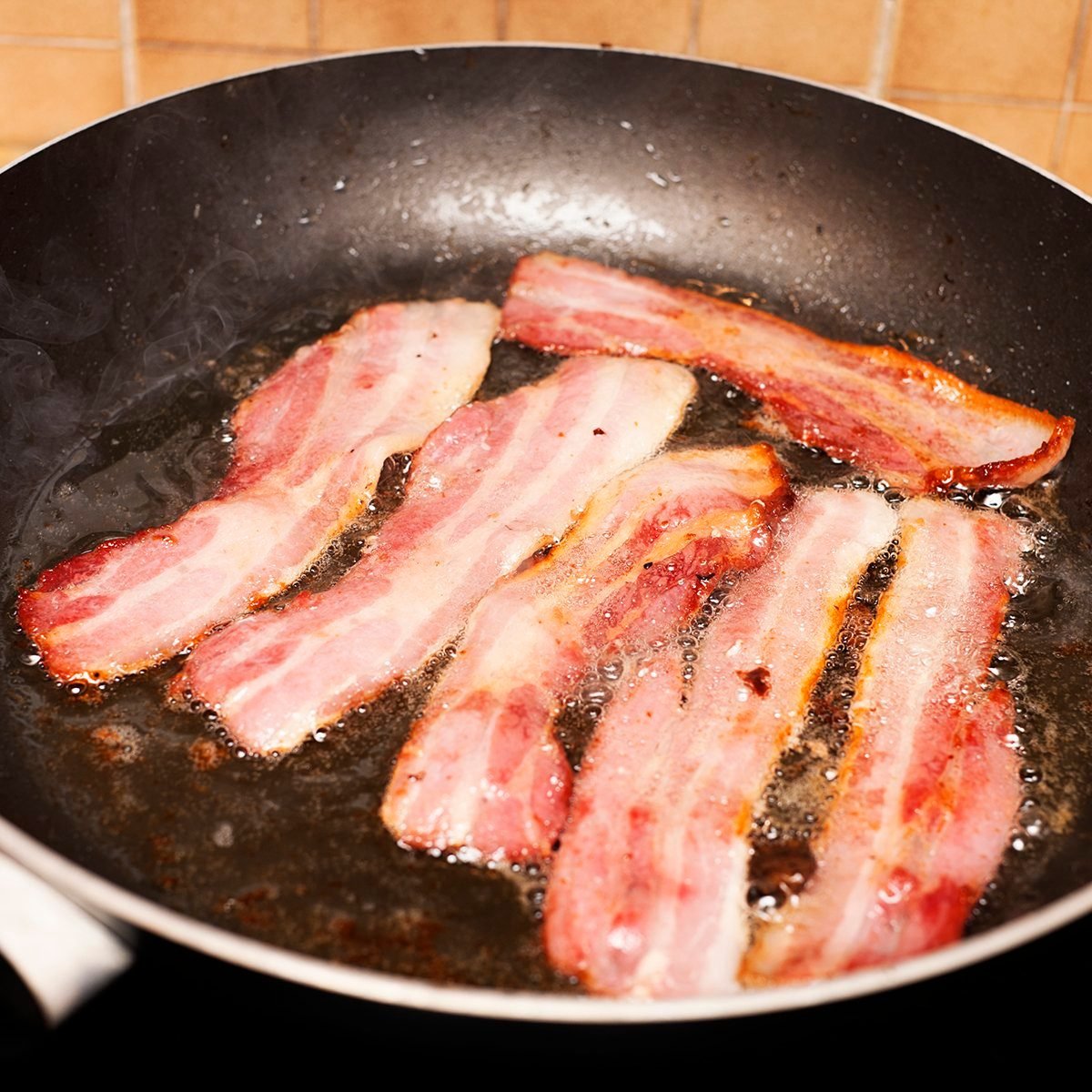
Works well: bacon
Nothing compares to the smell of sizzling bacon in the morning, and a non-stick skillet will result in crispy, evenly-cooked pieces. With less cleanup, you’ll be able to enjoy your bacon even on busy weekdays.
Avoid these common bacon mistakes.
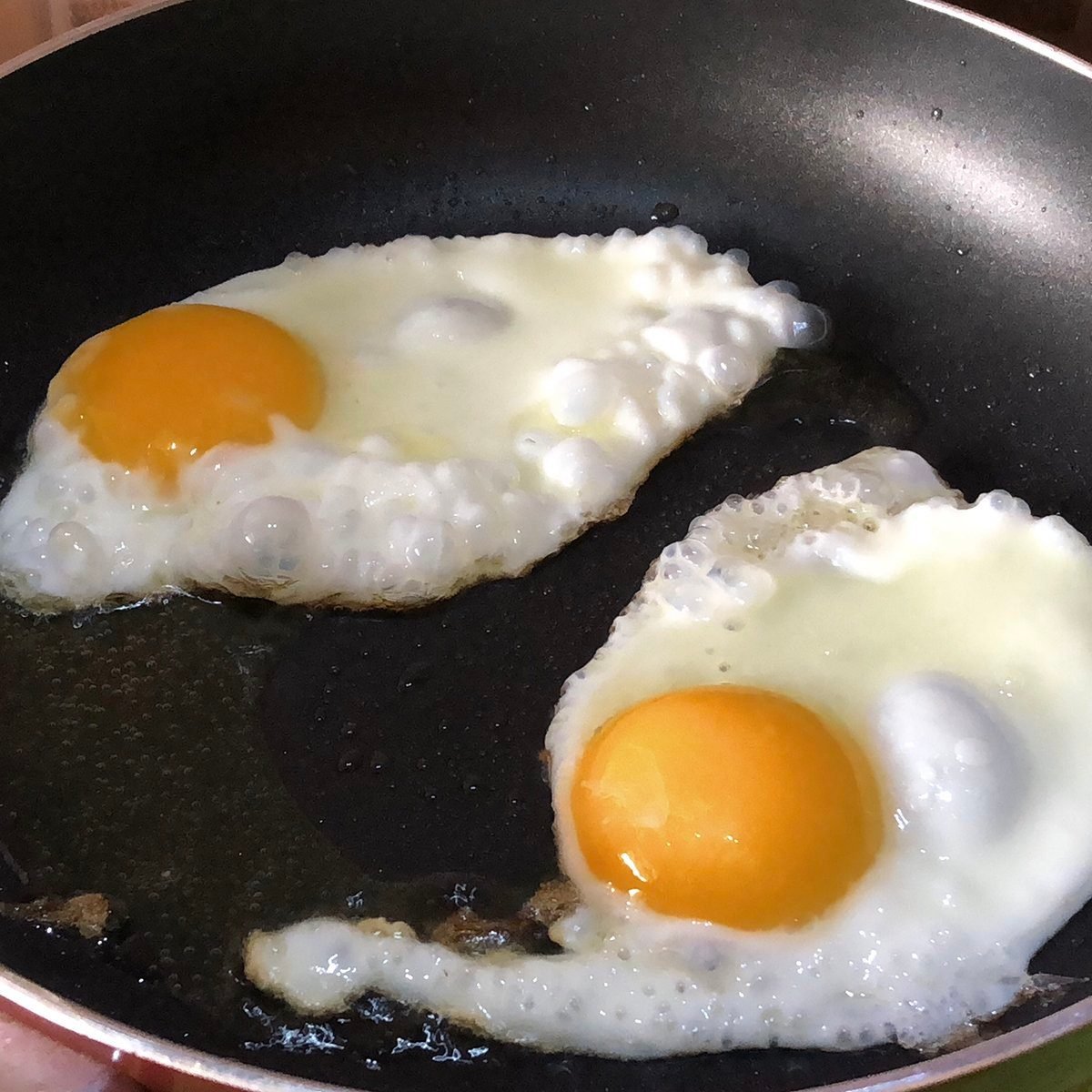
Works well: Eggs
You’ll want a non-stick skillet on hand to take your breakfasts or brunches to the next level. Non-stick pans will guarantee fluffy omelettes and the perfect scrambled eggs, while make flipping frittatas painless.
Find out how to make the perfect scrambled eggs.
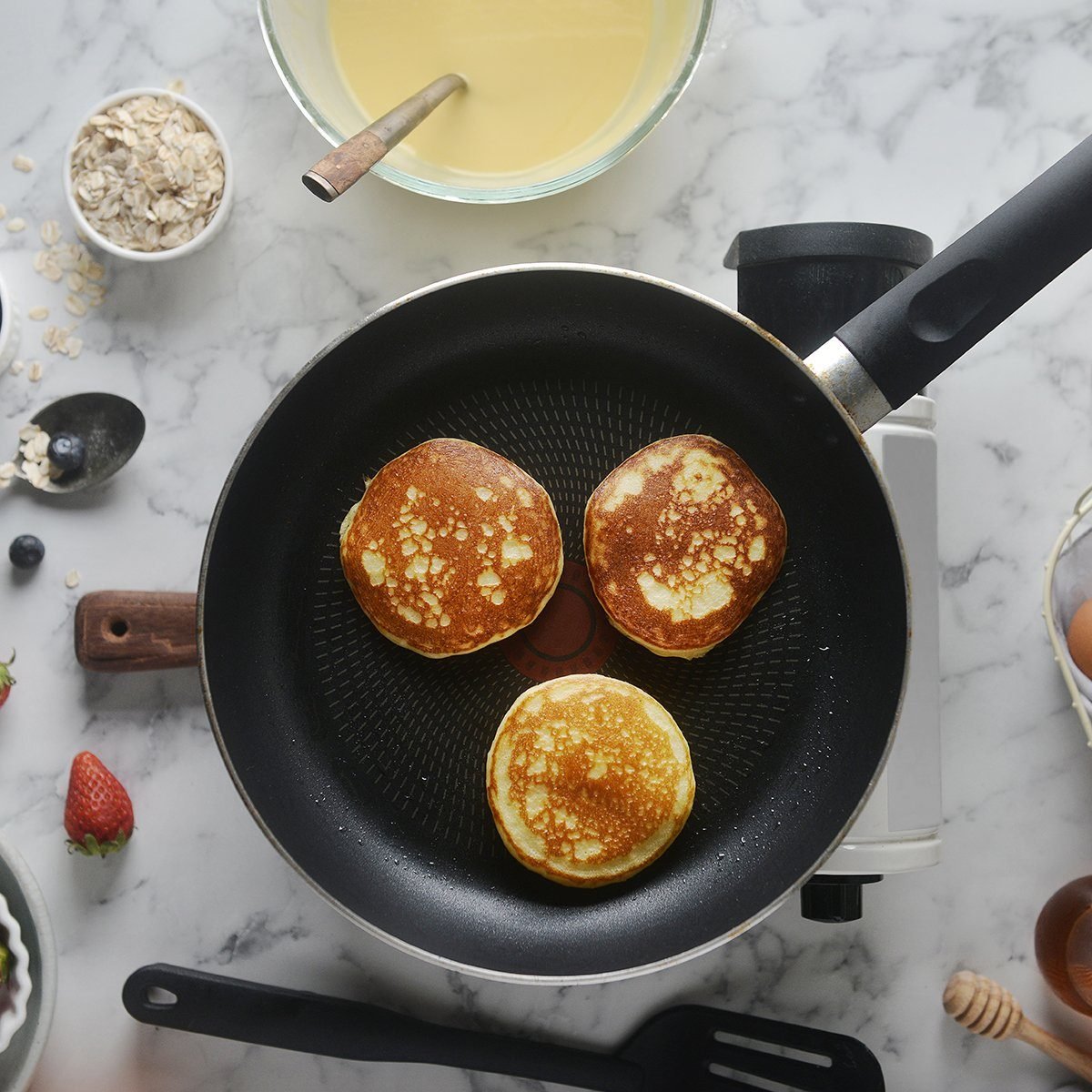
Works well: Pancakes
Proving that non-stick skillets are the king of breakfast prep, they’ll also simplify and upgrade your pancake game. Heavier non-stick pans will work better in this case to ensure even cooking throughout and make a fluffy, delicious start to your morning.
Discover the secret ingredient for fluffy pancakes.
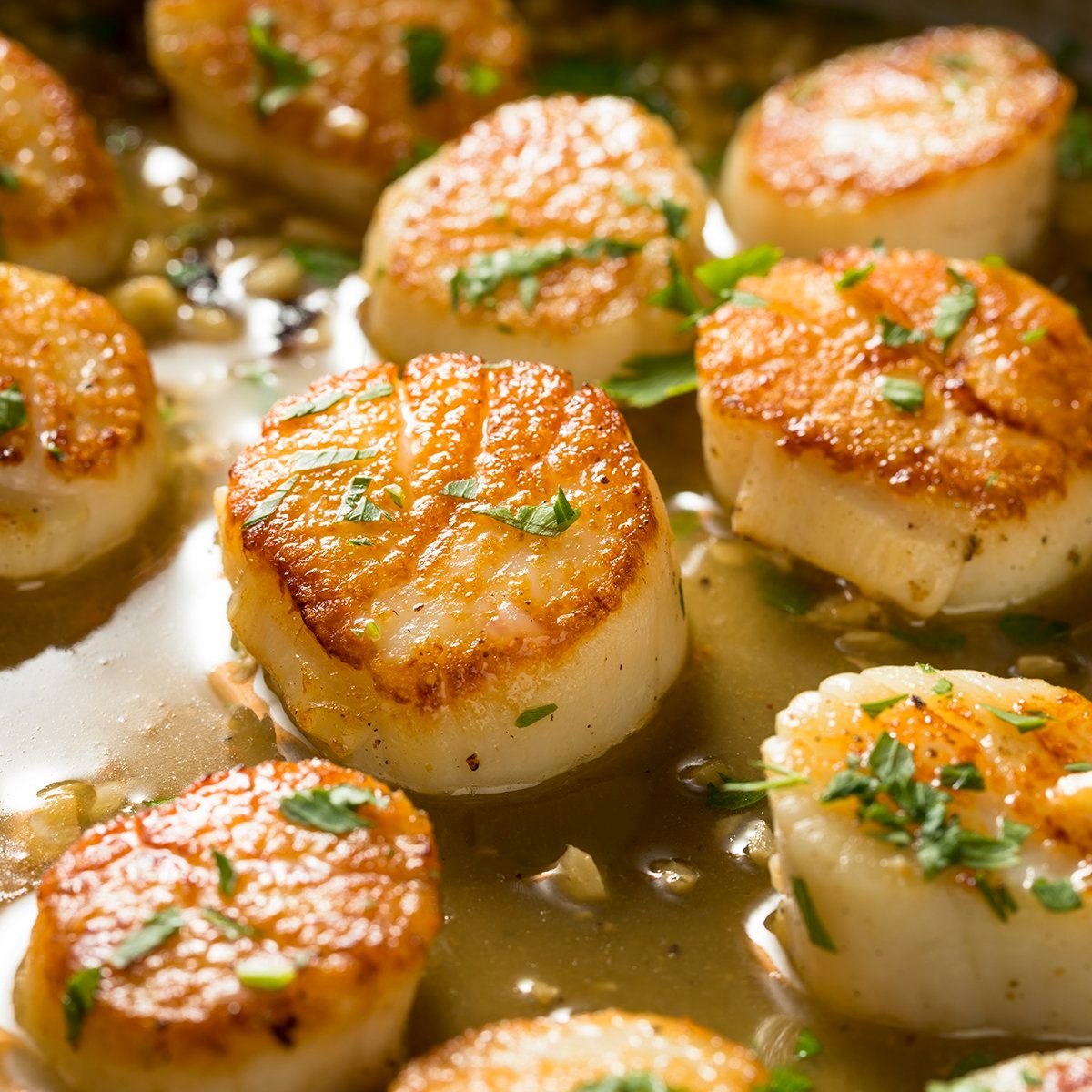
Works well: Delicate fish
Non-stick pans are perfect for hassle-free fish—including favourites like salmon and scallops, which have a tendency to make a mess. When using this type of pan, make sure the fish is patted dry and you preheat the pan for an evenly-cooked, crispy result.
Here are the ways you’ve been cooking fish wrong.
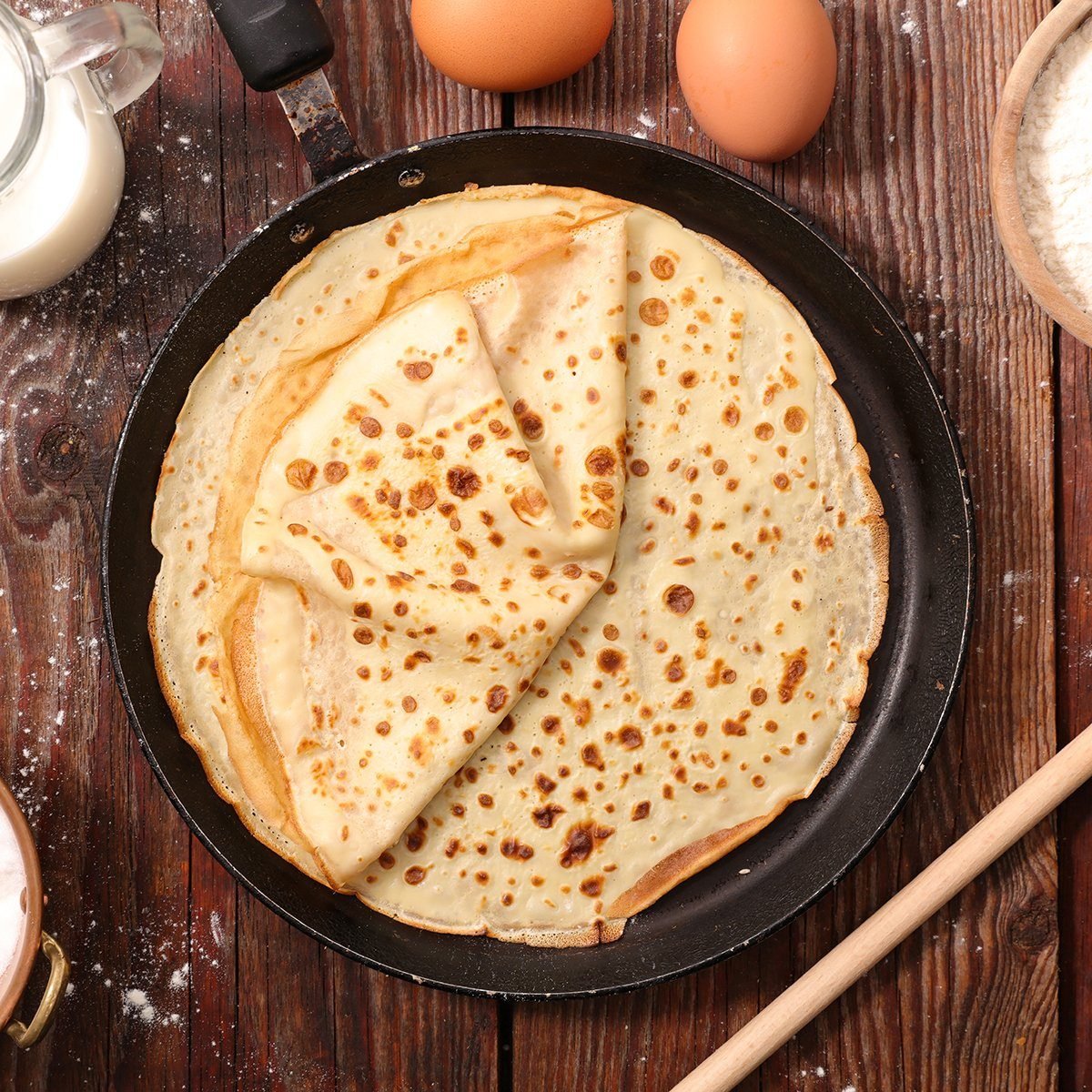
Works well: Crepes
Crepes, pancakes’ delectable French cousin, are an ideal dish to cook in a non-stick skillet. Since they are thin and delicate, non-stick skillets will reduce the likelihood of them burning or sticking to the pan. This results in a perfect crepe each time, ready to be filled with fruit, cheese or your accompaniment of choice.
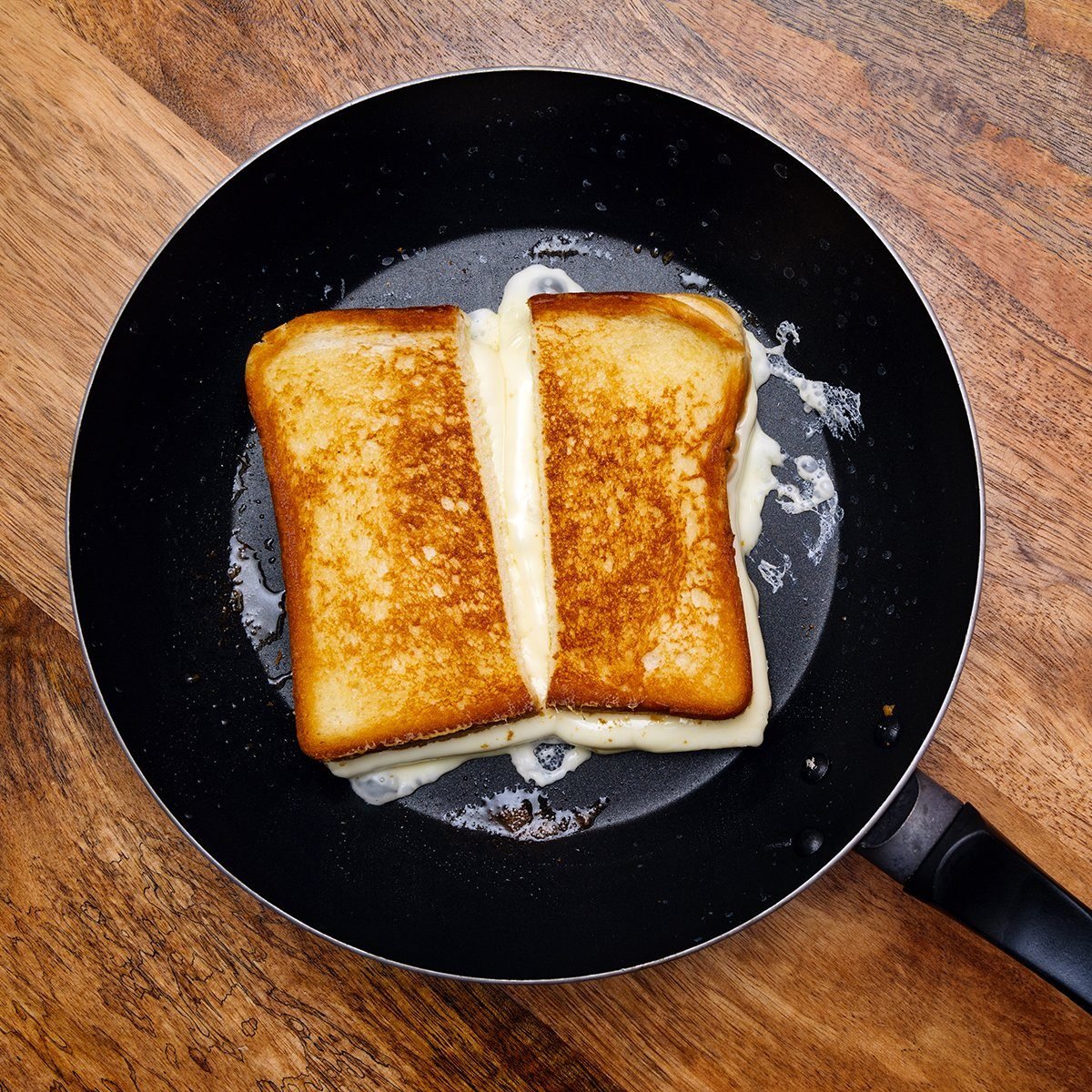
Works well: Cheesy dishes
Gooey and decadent, cheesy dishes have a best friend with non-stick pans. Prepare grilled cheese or other cheese-rich dishes like quesadillas without worrying about the cheese sticking.
Follow these tips to make the perfect grilled cheese sandwich.
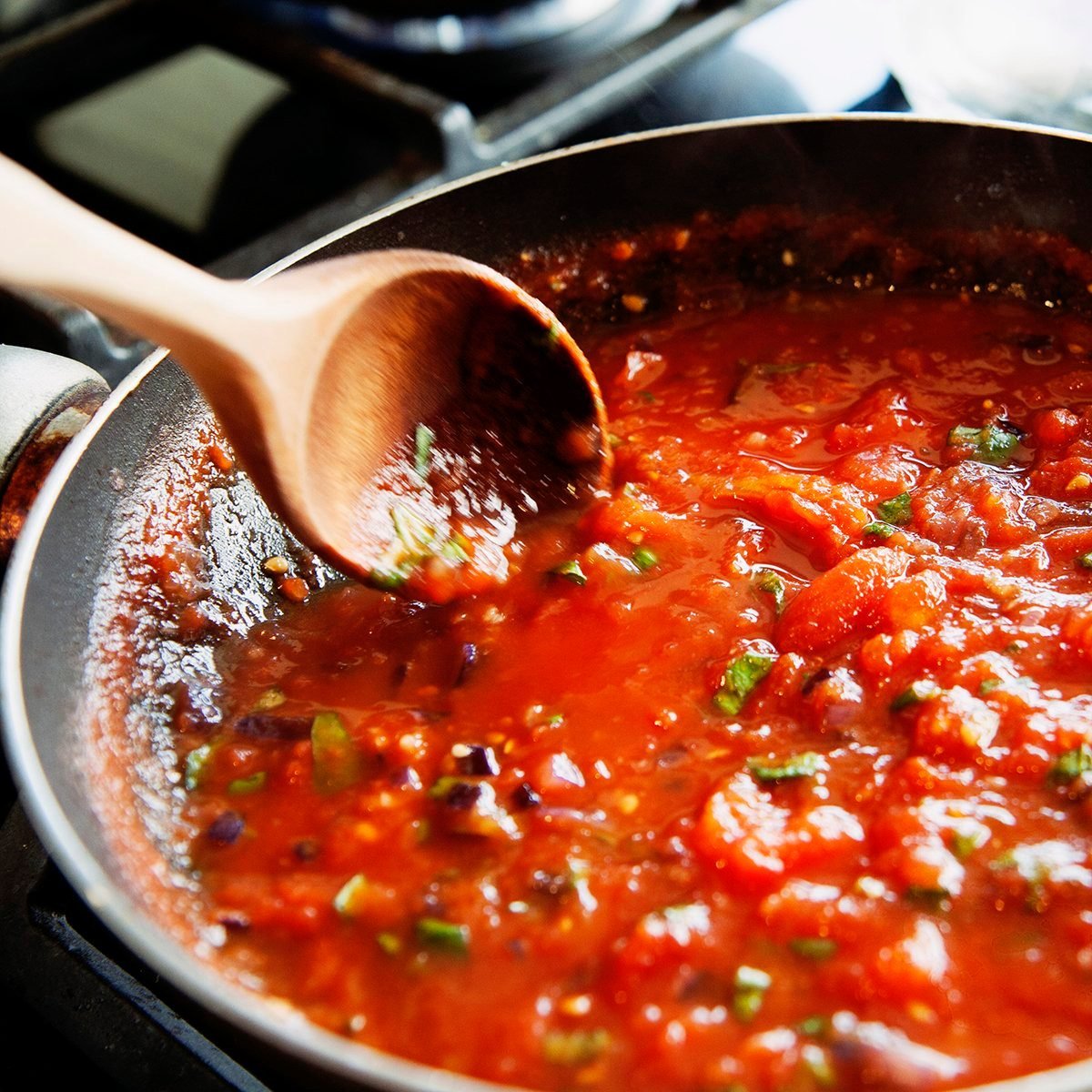
Doesn’t work so well: Acidic foods
When working with tomatoes or lemons, put away the non-stick cookware. Acidic foods like these will wear off the non-stick coating, making the pans age more quickly. Stainless steel is your best bet for dishes that feature these flavours.
Watch out for these stainless steel cooking mistakes.
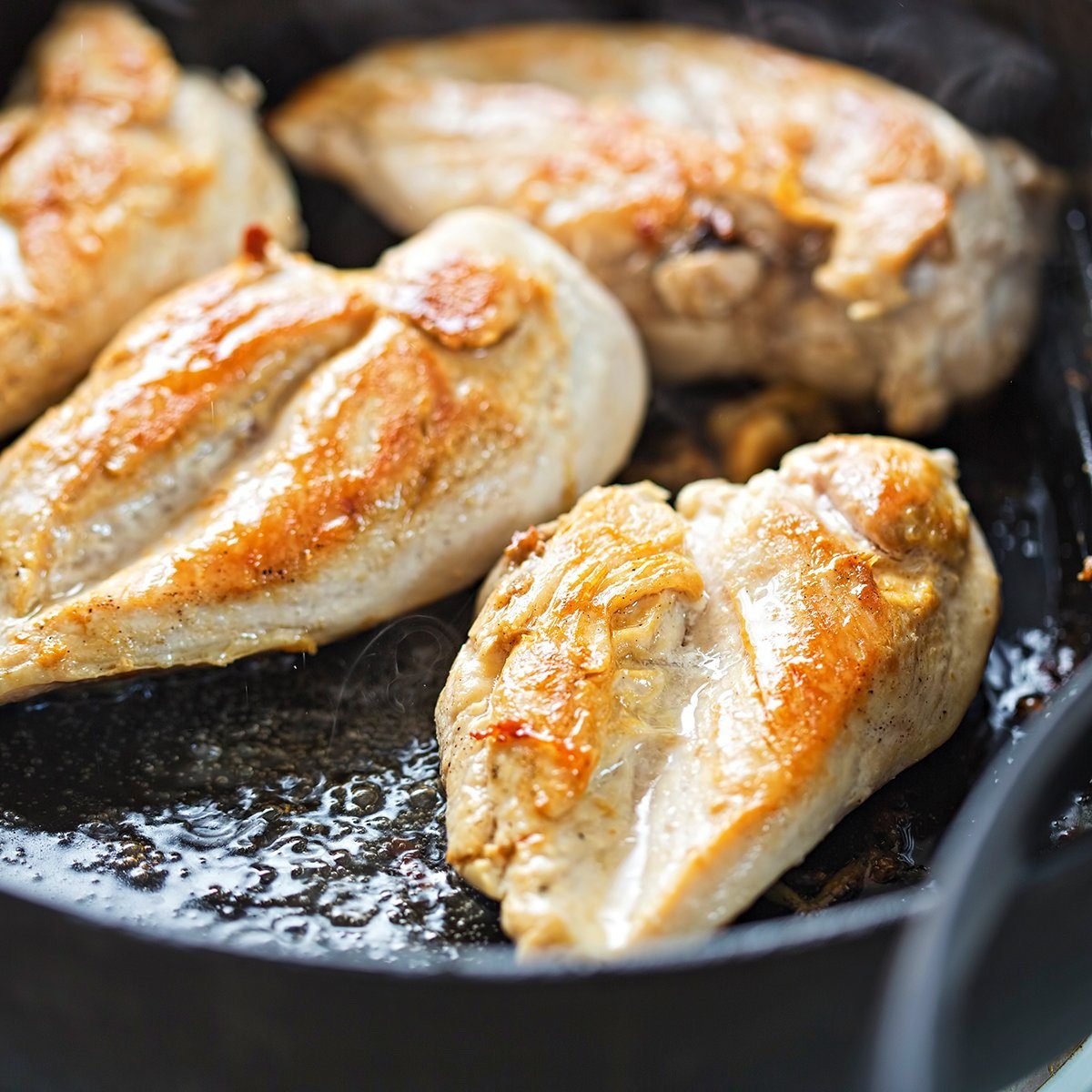
Doesn’t work so well: When charring or searing
When cooking meats, especially those like steak or chicken breast, non-stick won’t give you the crispiness or all-over browning you’re aiming for. Use a thin layer of oil on cast-iron or stainless steel pans for an evenly-cooked, delicious dinner.
Avoid these steakhouse etiquette mistakes.
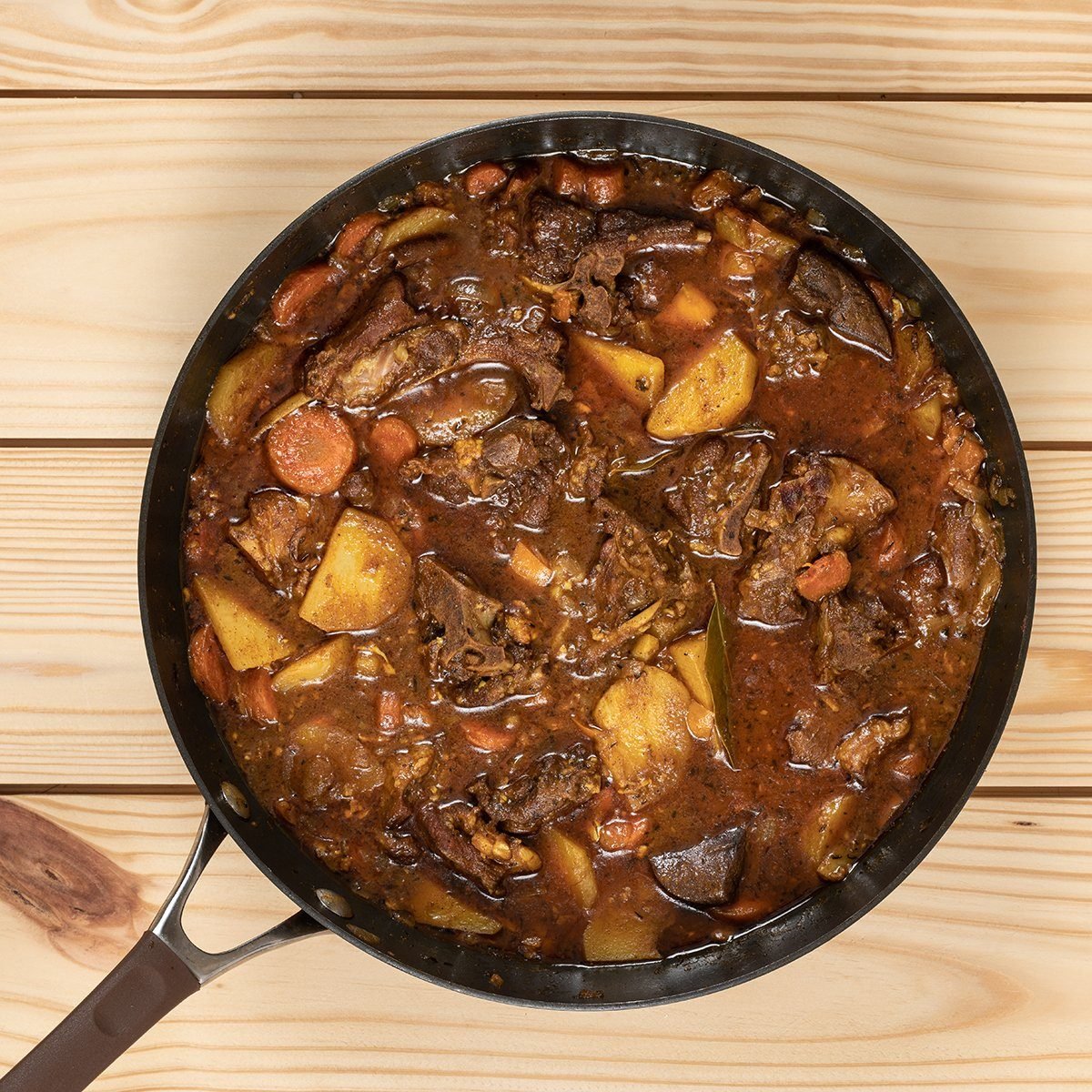
Doesn’t work so well: Pan sauces
While the coating on non-stick pans make them optimal for reducing mess, it also prevents bits to brown at the bottom of the pan. These bits are essential for maximum flavour and richness in your sauces.
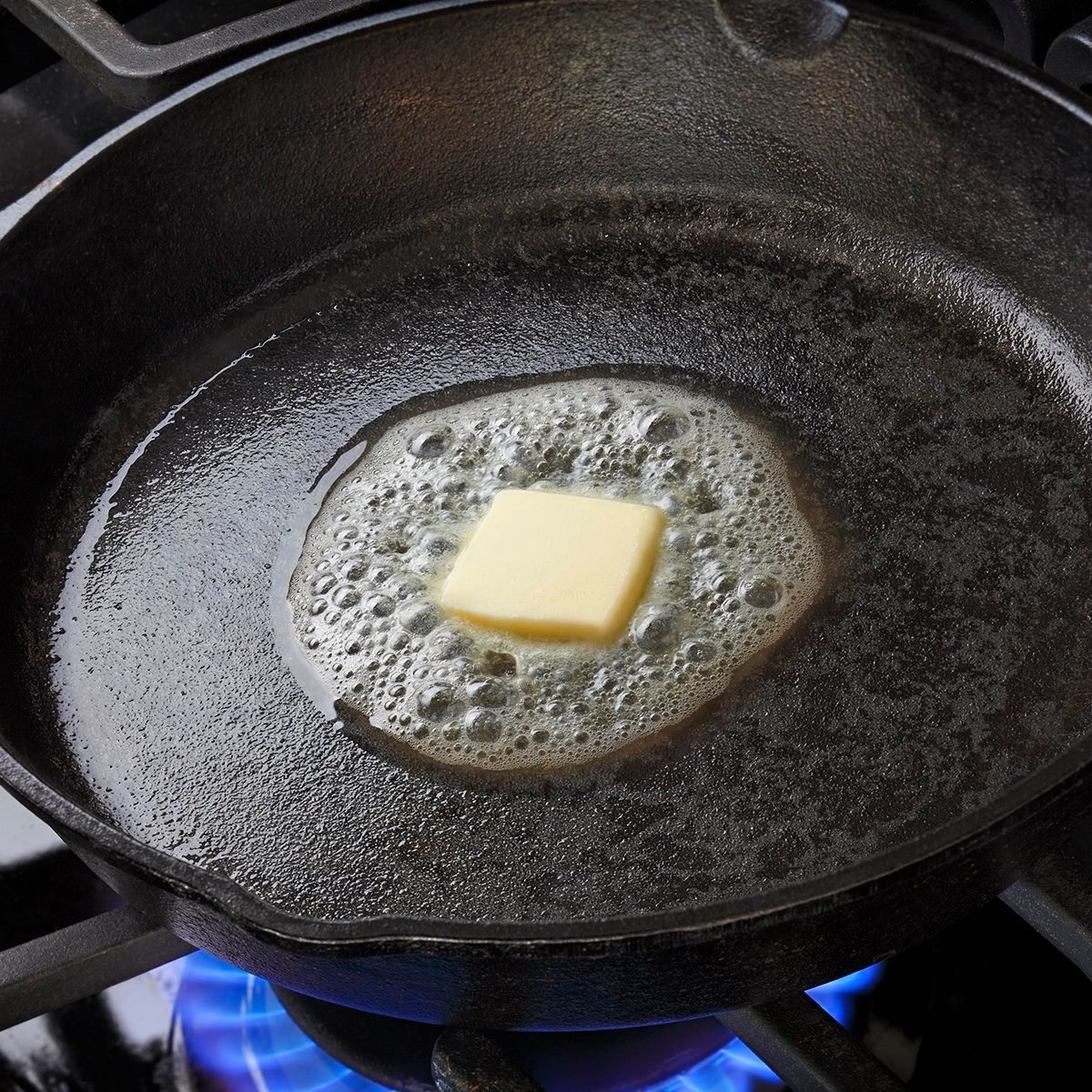
Doesn’t work so well: Browning butter
Nutty and toasty browned butter lends a delicious, rich flavour to sauces and baked goods, but you should bench your non-stick pan for this. A stainless steel pan will let you monitor the butter to make sure it doesn’t burn, and will cook the butter evenly.
Next, check out the cooking mistakes that ruin your food.